
In Part 4, I introduced the idea of “intermediate packets.” Instead of delivering value in a big project that spans huge amounts of time, we want to deliver it in smaller chunks at more frequent intervals.
This follows a basic principle that has revolutionized many industries: small batch sizes.
The Toyota Production System (from which the term “just-in-time” is borrowed) used small batch sizes to revolutionize manufacturing, increasing the throughput of its factories far beyond what anyone thought possible. The tools and methods developed to enable small batch sizes propelled the company through 7 decades of growth, transforming a small bicycle shop into the world’s largest automaker.
In software, small batch sizes took the form of continuous integration and deployment. Instead of releasing software updates in one massive push once a year, systems were designed to automatically integrate updates right into the existing codebase in small chunks, and even deploy them straight to end users. This practice has had a massive impact on the quality and speed of innovation of the apps we use today.
In the startup world, Eric Ries has shown us in his book The Lean Startup how delivering value quickly in small chunks is essential for learning and innovation. His methods, also inspired by Toyota’s Lean Production philosophy, have become the default playbook for most technology startups.
As powerful as small batch sizes have been for organizations and teams, we lack a framework for how individuals can use small batch sizes to their advantage.
Moving to small batch sizes always requires a massive paradigm shift. Changing the basic unit by which work is organized requires challenging fundamental assumptions about when, where, how, why, and by whom that work should be completed.
The Iron Triangle of Project Management
The first tool we’ll draw on is the Iron Triangle of Project Management, which illustrates that any given project has three competing, but interdependent constraints: time, budget, and scope.
“Time” refers to how long it will take to complete the project. “Budget” refers to the cost to complete the project. “Scope” refers to the components or features included in the project (sometimes referred to as requirements or specifications).
A project manager can trade off these constraints against each other. For example, a project can be completed faster by spending more money (for example, to expedite certain tasks) or reducing the scope (dropping non-essential features).
Alternatively, the project can increase the scope (add more features) by increasing the budget (to pay for the extra work), or by extending the time allowed (pushing back the deadline).
And projects can reduce the budget needed by reducing the scope, or by extending (or in some cases, shortening) the timeline.
The Triangle is made of “iron” because any change in one of the constraints requires changes in at least one of the others. You can’t just decide to improve on time, budget, and scope all at once without compromising on quality.
Upscoping and downscoping
Traditionally, individual workers had little control over any of these three constraints.
Scope was determined by orders sent down from executives, who demanded an exact list of features with little room for negotiation.
Time was fixed by The Deadline, with serious consequences if it was missed either by an individual, or the team as a whole.
Budget was altogether out of the hands of individual contributors, except for small incidental expenses.
The only people responsible for actively managing the three project constraints were project managers and executives. All information on current progress flowed upwards to them, and the decisions they made flowed downwards to those doing the work.
With the flattening of hierarchies and the vastly increased pace of change, this model has completely broken down.
Projects have so much ambiguity and uncertainty that deadlines and budgets cannot be known in advance. Even the scope of features is a variable to be discovered when creating a new product or entering a new market. Which means that only the front-line workers operating at the edge of the unknown are equipped to make these tradeoffs.
The key idea we want to take from The Iron Triangle is that any deliverable can change its scope at any time. This is not intuitive for most people coming from traditional employment, where success is defined by sticking exactly to the original plan.
But if all three sides of the triangle are fluid and dynamic, you can fine-tune how your work is delivered to take advantage of both opportunities and constraints:
Do you lack funding for your project?
Downscope it into a smaller product you can charge for, to raise funds for the bigger version.
Do you work a full-time job and not have time to develop a full product?
Downscope it into small, well-defined parts you can complete one at a time, in the evenings and on weekends.
Are you unsure if you’re heading in the right direction?
Downscope your product into a prototype you can test out with potential users before going into full-scale production.
Are you about to go on vacation and afraid you’ll forget where you left off?
Downscope your work-in-progress into a simple status summary that will help you remember what you were doing.
Are you having trouble making an important decision?
Downscope your thought process into a short email you can send to trusted colleagues for their advice.
Are you in an unexpectedly productive mood or was a task easier than expected?
Upscope what you’re taking on as you go along to ride the momentum and make more progress.
We are used to taking orders, even from ourselves. But the true leverage in knowledge work is in the meta-work (the work of planning the work). Because information is intangible, it can change shape and form at any moment, to fit into any span of time or any available budget.
With the three variables of Time, Budget, and Scope at your command, you have a dashboard for meta-work. You can adjust one to see how the other two respond, over time gaining an intuitive sense of how they are connected.
Follow us for updates on Twitter, Facebook, Instagram, LinkedIn, or YouTube.
The Only Subscription
You Need to
Stay at the
Edge of AI
The essential toolkit for those shaping the future
"This might be the best value you
can get from an AI subscription."
- Jay S.
Join 100,000+ leaders, builders, and innovators

Email address
Already have an account? Sign in
What is included in a subscription?
Daily insights from AI pioneers + early access to powerful AI tools
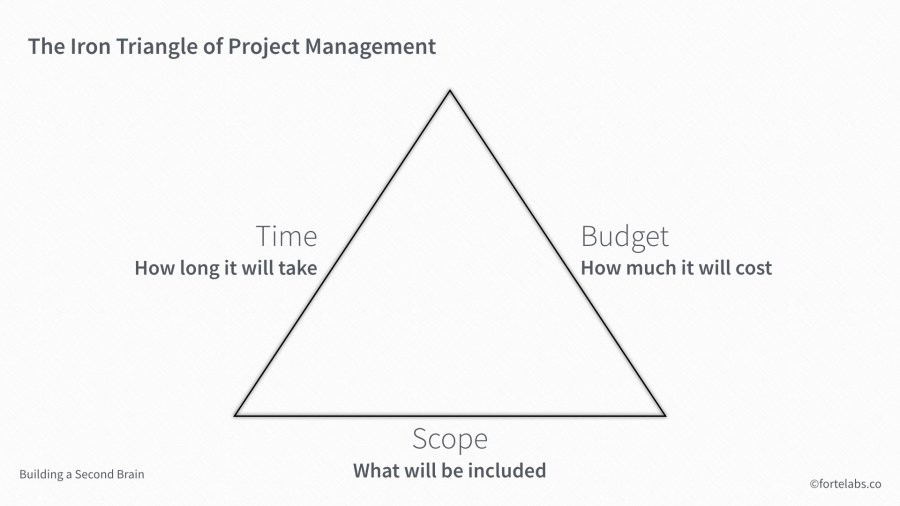
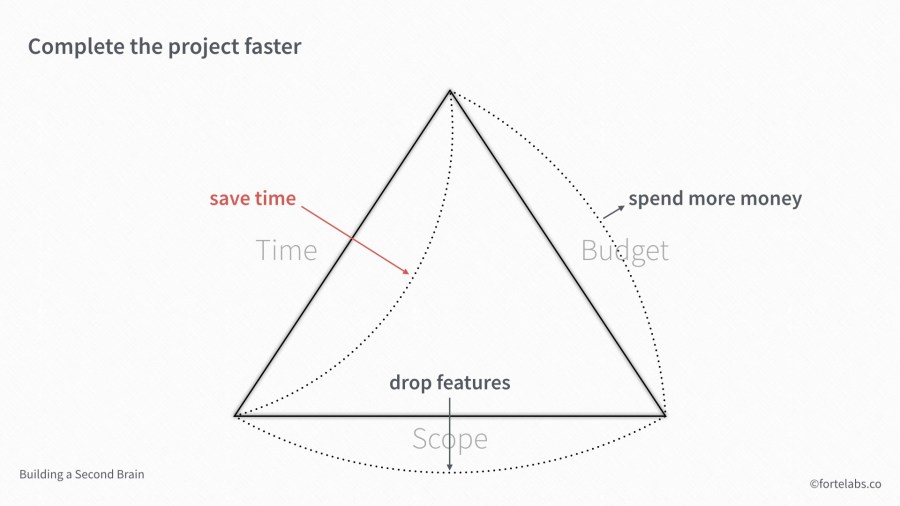
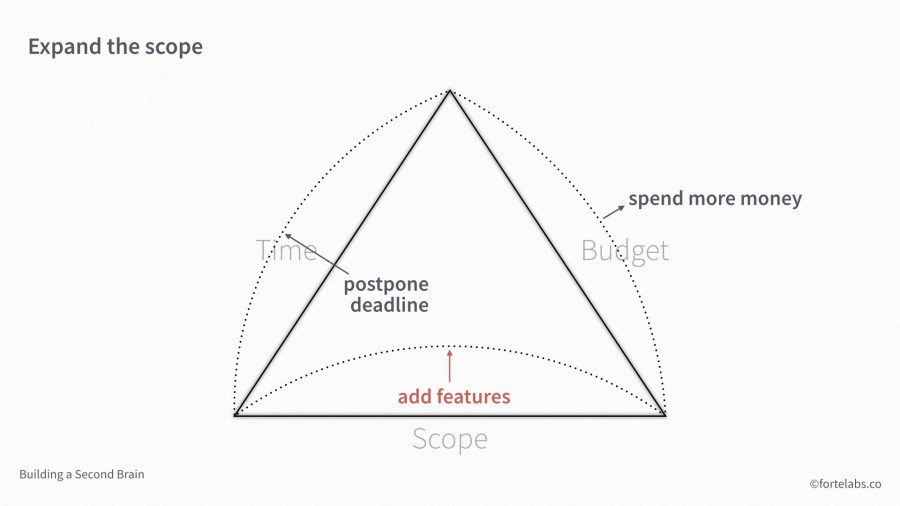
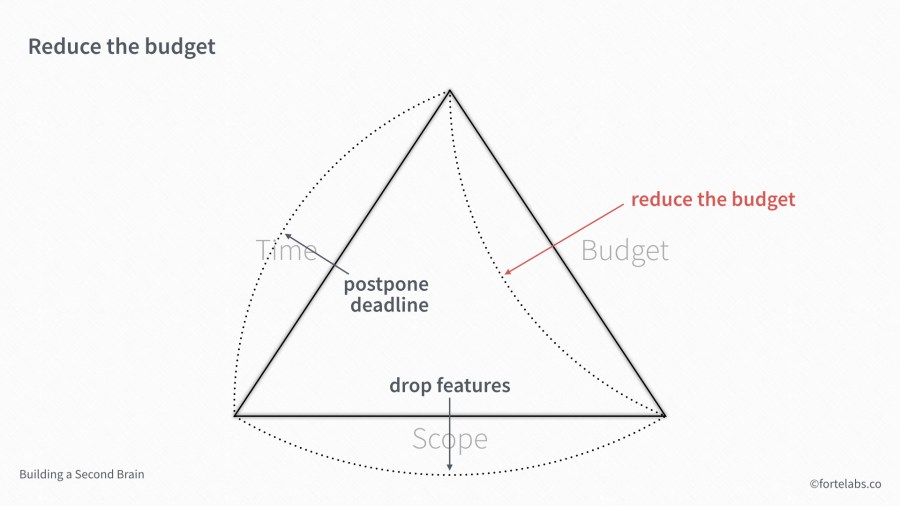
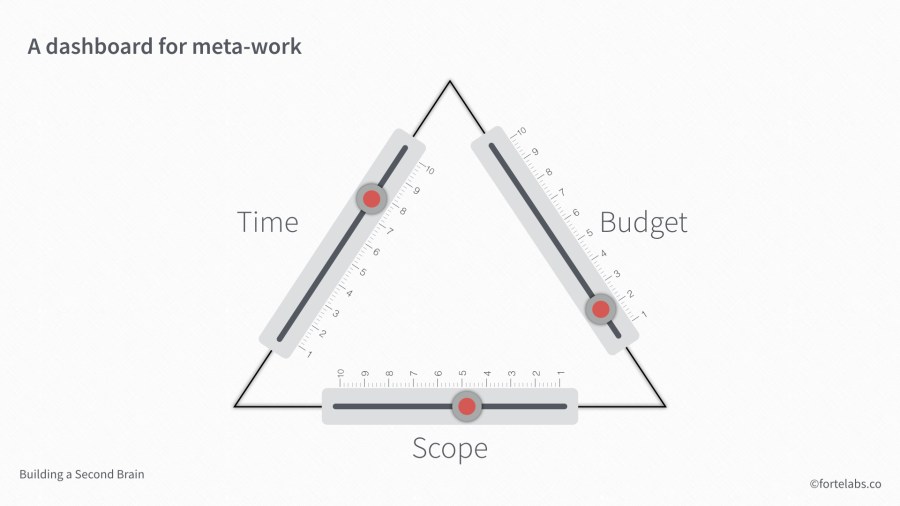







Comments
Don't have an account? Sign up!